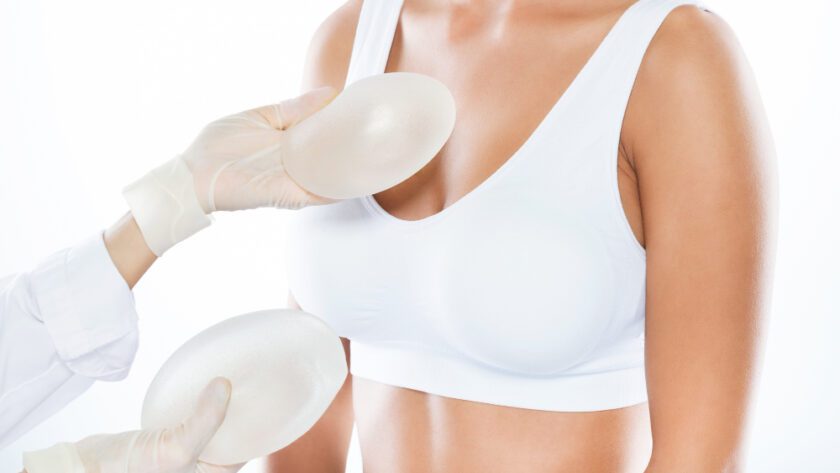Key Takeaways
- Breast augmentation with fat transfer is a popular cosmetic procedure that blends aesthetics with science.
- This technique offers a natural alternative to implants, utilizing the patient’s fat.
- Understanding the procedure, recovery, and potential outcomes is crucial for those considering this option.
Table of Contents
- Introduction to Breast Augmentation with Fat Transfer
- How the Procedure Works
- The Benefits of Using Fat Transfer
- Risks and Considerations
- The Science Behind Fat Transfer
- Recovery and Aftercare
- Comparing Augmentation Techniques
- Real-Life Success Stories
Breast augmentation with fat transfer is revolutionizing cosmetic surgery by offering a method that enhances breast size and shape using the patient’s body fat. This innovative approach provides aesthetically pleasing outcomes and minimizes the risks associated with artificial implants. Individuals considering this procedure often begin their research journey by examining before and after breast augmentation with fat transfer images. Observing these results helps set realistic expectations and facilitates decision-making regarding cosmetic surgery options.
Introduction to Breast Augmentation with Fat Transfer
This ground-breaking procedure is rapidly gaining popularity due to its dual benefits. Utilizing the patient’s body fat promises natural results both in appearance and feel. Unlike traditional breast implants, which can sometimes appear over-enhanced or artificial, the fat transfer method enables subtle yet noticeable enhancement without introducing foreign materials into the body. It’s particularly appealing for those apprehensive about synthetic implants but still desire an improved silhouette.
How the Procedure Works
The process begins with liposuction, a technique where excess fat is extracted from a donor site, such as the abdomen, thighs, or flanks. This extracted fat then undergoes a purification process, which removes impurities and prepares it for re-injection. Precise injection of refined fat into the breasts is done meticulously with several small syringes to guarantee uniform placement and ideal shaping. Surgeons must be meticulous, crafting the results to meet the patient’s aesthetic goals while maintaining symmetry and natural movement.
The Benefits of Using Fat Transfer
One of the outstanding benefits of fat transfer is its ability to offer two treatments—removing unwanted fat from areas where it’s plentiful and enhancing the breast’s aesthetic appeal. Additionally, the technique reduces the risk of rejection or allergic reaction since it uses autologous tissue. According to the American Society of Plastic Surgeons, the procedure can produce results that are more harmonious with the body, as it enhances the breast’s contours while slimming down other body parts.
Risks and Considerations
Despite its advantages, breast augmentation through fat transfer still has risks. Fat reabsorption is a common concern, where a significant portion of the transferred fat is reabsorbed by the body, potentially leading to less volume than initially planned. Additionally, complications such as asymmetry or small lumps can occur caused by uneven fat settling. Infection is a risk with any surgery, making it imperative for patients to choose a qualified and experienced surgeon to reduce these risks and ensure proper outcomes.
The Science Behind Fat Transfer
On a scientific level, the success of fat transfer techniques depends on the body’s ability to integrate the new fatty tissues. After being moved, the fat cells require a blood supply in the new area to live and grow, guaranteeing the longevity of the enhancement. Research has shown that regenerated fat cells can enhance regenerative medicine approaches, contributing to the field’s growing understanding of tissue engineering and regenerative capacities.
Recovery and Aftercare
Recovering from breast augmentation with fat transfer requires diligence and a thorough understanding of post-care instructions. Patients are advised to rest extensively after the procedure, avoiding rigorous physical activities for several weeks. Managing swelling through compression garments and routine follow-ups with the healthcare provider are crucial steps in ensuring recovery success. Proper care during this period can significantly affect long-term satisfaction with the results, making adherence to recovery guidelines paramount.
Comparing Augmentation Techniques
Several factors weigh into the decision-making process when comparing fat transfer to traditional breast implants. Patients often choose fat transfer for its natural outcome and dual-benefit approach, as opposed to implants, which might achieve more dramatic size increases. However, implants offer more predictable results in terms of volume and shape. Therefore, evaluating both options’ goals and potential drawbacks is essential in choosing the appropriate augmentation method, considering both long-term maintenance and personal health priorities.
Real-Life Success Stories
Numerous individuals have chosen breast augmentation with fat transfer due to its myriad benefits and successful outcomes. Testimonials frequently highlight the satisfaction derived from having a more balanced figure. These stories emphasize transformations post-weight loss or childbirth, illuminating the journey toward feeling renewed in one’s body. Real-life examples also demonstrate the importance of setting realistic expectations, comprehensive consultations, and the value of a skilled surgical team in achieving desired results.




